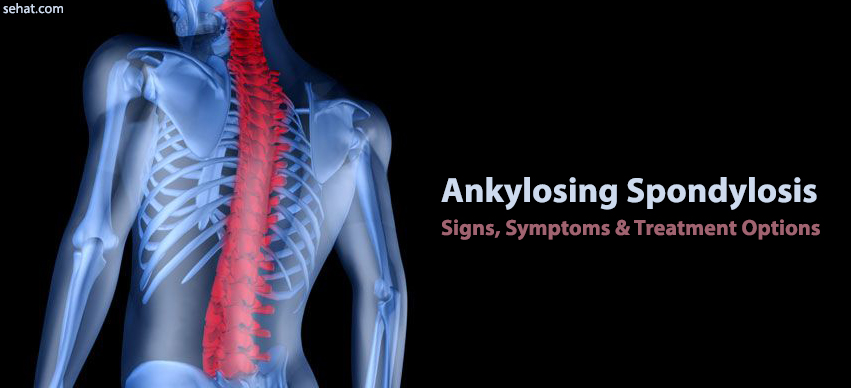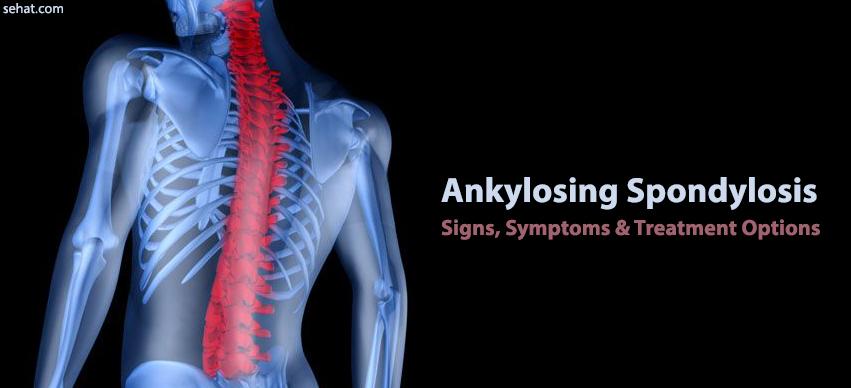Nanoparticle Therapy – An Emerging Cancer Treatment
5 Min Read


When the cells and chemicals who are responsible for the security [immunity] of the body from external virus, bacteria and other micro-organisms misdirect their target and start attacking our own normal and healthy tissues considering them to be external to the body, a phenomenon is created which is called AUTO IMMUNITY. This process goes uncontrolled as the cellular security mechanism fail to realise that the tissue under attack are of their own and the very same body and the civil war continues causing damage to healthy tissue and its adjoining structures. In a healthy human body this destruction is characterised by five unique symptoms known as
1. Pain [Lat: Dolour]
2. Redness of the affected area [Lat: Rubor]
3. Swelling of the local site [Lat: Tumour]
4. Rise in local temperature [Lat: Calor]
5. Loss of function [Lat: Functio Lussa]
These 5 symptoms and signs together comprise a pathological entity called INFLAMMATION
From now onwards these two terms AUTO IMMUNITY and INFLAMMATION will be quite frequently used in explanation of different Rheumatological disorders. It is worth mentioning that the intensity of INFLAMMATION can roughly be quantified by checking few blood investigation parameters e.g. CRP [C - reactive protein] and ESR [Erythrocyte Sedimentation Rate].
The above explanation was necessary to discuss Ankylosing Spondylosis as the disease is an AUTOIMMUNE INFLAMMATORY disorder where the affected tissue or area is the Sacro-Iliac Joints and Lumbo-Sacral Joints of young healthy individuals where boys are more affected than girls. The diagram underneath points out the area of involvement.
Having back pain is a common finding among most of the individuals and almost 90% of these back pains are caused due to mechanical problem i.e. due to excess weight bearing, trauma, poor posturing, excess body weight etc. There is no mechanical component in back pain of Ankylosing Spondylosis. The pain is purely caused due to an Autoimmune Inflammation of previously healthy uninjured normal Sacro-iliac joints. Hence the back pain of Ankylosing Spondylosis is often termed as INFLAMMATORY BACK PAIN which has the following characteristics:
Apart from INFLAMMATORY LOW BACK PAIN, there may be involvement of one or two large joints e.g. ankle, knee or wrist in an asymmetrical manner. This component of the disease is called PERIPHERAL ARTHRITIS.
Apart from joint involvement there may be symptoms of organ involvement other than joints e.g. Redness and Pain of eyes [due to UVEITIS], Skin disease [Psoriasis] and Gastro intestinal problems [Inflammatory Bowel Disease characterised by Painful passage of Stool which is often mixed with Blood and Pus and sometimes along with fever] and Lung Disease [Interstitial Lung Disease characterised by progressive shortness of breath, chest tightness and loss of elasticity of the lungs] These group of disorders is often coined together as EXTRA-ARTICULAR SYMPTOMS.
Ankylosing Spondylosis usually affects the age group of 18 to 30 years and Boys or Men are more affected than Females. The presentation is very typical of a Low back Pain which is severe in the early morning after waking up from the bed and gradually improves on walking or activity and again comes back during a prolonged period of rest during the second half of the sleep. Often there is radiation of the pain into buttocks [Hips] causing alternate buttock pain.
In peripheral arthritis, one or more large joints of the body are affected causing pain and swelling along with early morning stiffness. Usually, ankles and knees are affected but it is not uncommon for elbows and wrists to be affected.
If the disease is not addressed early and chronic therapy is not started then this disease can cause severe debilitation, deformity, tremendous deterioration of the quality of life and ultimately death. Progressive Inflammation of the Sacro-Iliac joints may cause ultimately fusion of the Sacrum with Ileum and this phenomenon of obliteration of joint space causing fusion of the two bones over a joint is called ANKYLOSIS. This process of bony fusion gradually proceeds upwards involving each segment of the Spinal Column or the Vertebra causing impaired movement of the lumbar region of the spine [Reduced and painful movement of back leading to complete loss of any movement of low back]. The patient takes a complete erect posture and sometimes hyper- erect posture. The process of bony ankylosis gradually proceeds upwards towards the thoracic spine and up to cervical spine [Upper mid back to Back of Neck] causing a straight and rigid body posture with complete loss of neck movement. Often the X-Ray of Spine taken at this time looks like a BAMBOO SPINE. [Vide Figures 5 to 7]. Patients are dependent on manual support or walker to move around. There may be difficulty in breathing due to poor movement of the rib cage and may cause severe oxygen shortage of lungs, pneumonia and ultimately death.
One should seek consultation from Experienced Rheumatologist at the earliest as the treatment of Ankylosing Spondylosis is getting updated every 3 to 4 years and new treatment guidelines are coming. Recently the researchers have separated Ankylosing Spondylosis from Peripheral Arthritis and Self-Limiting Inflammatory Low back pain that resolves automatically without any damage. However, the treatment remains the same.
To diagnose the disease classical symptoms as discussed above are strong enough to create a high index of suspicion. A genetic marker called HLA B27 is often asked for and almost 90% of patients of Ankylosing Spondylosis have this test as POSITIVE. If the results are positive along with the symptoms then an MRI of Sacro-Iliac Joints is often asked for. MRI can identify changes in the joint much ahead of X-Rays as it can visualise the cartilage, the soft tissue within the joint and even the bone marrow of the adjoining bones. Bone Marrow edema of the adjoining joints is the earliest sign of Sacro-Ilitis and helps the rheumatologists to catch the disease early in the course and start management. MRI can grade the intensity of Sacro-ilitis which is necessary to follow up the treatment response. Plain X-Rays of the Sacro Iliac Joints cannot detect any changes in early disease but any bony changes can readily be detectable. A normal X-Ray is not necessary to be repeated within next 2 years for confirmation of the same diagnosis.
Blood Parameters such as CRP [C – Reactive Protein] and ESR [Erythrocyte Sedimentation Rate] are frequently measured as these parameters give an idea of the amount of inflammatory activity persisting in the body. The treatment is directed towards relief of symptoms, arrest of disease activity and achieving minimal inflammatory state of the body [or the joints]
All patients of Ankylosing Spondylosis should be physically active all throughout the day. The disease demands more activity in the person than his peers. A normal sacro-iliac joint hardly permits any movement in human body as these joints are formed by apposition of two flat bony surfaces. Hence, the inflammatory chemicals easily get stagnant inside the joint space in highly concentrated amount and can cause easy joint damage. Excessive activity in form of dynamic exercises and games such as contact games [Football, volleyball, kho kho, kabaddi, hockey, basketball, tennis etc] causes jerky movement of body and results in small amount of movement of the sacro-iliac joints. This movement of the sacro-iliac joints results in gradual movement of the inflammatory chemicals out of the joint into blood and fresh joint fluid which is low in inflammatory chemical concentration pours into the joint cavity and thus the intensity of the joint damage is reduced. However, if the disease has progressed a bit it is advisable to avoid jerky movements of the body and start dedicated and guided physical therapy instead.
We use ETORICOXIB tablets to control the pain. The dose ranges from 60 to 120 mg per day. It has got its own battery of side effects such as gastritis, gastric ulcers, kidney injury and worsening of cardiac pre-existing cardiac problem. But, kindly note that this is the only medicine that can reduce the intensity of inflammation in the sacro-iliac joint and arrest or reverse erosion. Hence for a person suffering only from inflammatory back pain without involvement of any other peripheral joint, this is the medicine of choice. We prescribe concomitant antacids for gastric protection and execute caution in persons who are suffering from Cardiac and Renal Ailments.
Other pain killers like ACECLOFENAC, DICLOFENAC, TRAMADOL, PIROXICAM, MELOXICAM and PARACETAMOL are prescribed to control breakthrough pain or when ETORICOXIB is not available but it is ETORICOXIB that scores beyond others as it is the only group of drug that can reverse the process of joint destruction
PARACETAMOL is not a pain killer per se. It is an antipyretic or a drug that reduces fever. But at a dose of 1000mg four times a day, it can address painful conditions. PARACETAMOL has got no role in reversal of the disease process. It is prescribed when ETORICOXIB is not available or is contraindicated as in patients with Kidney disorder or Cardiac Problems.
SULFASALZINE is actually an antibiotic and at a dose of 2 to 3 Gms per day in divided doses it has shown promise in addressing peripheral joint involvement. Researchers have failed to show any benefit with the use of SULFASALAZINE in only axial disease or in only back pain conditions.
The common side effects of SULFASALAZINE is gastritis, nausea, heart burn, hypersensitivity, photo dermatitis, rashes, bone marrow suppression, liver problems and sometimes haemolytic anaemia [in patients who are deficient with a specific enzyme called Glucose 6 Phophatase (G6PD)]. Following precautions should be taken while taking SULFASALAZINE
METHOTREXATE was first discovered for its efficacy against different cancers. Currently it is used in treatment of quite a few cancerous conditions. It has got excellent role in management of RHEUMATOID and PSORIATIC ARTHRITIS but unfortunately researchers have failed to show any benefit of its use in ANKYLOSING SPONDYLOSIS. Hence, use of METHOTREAXATE is not recommended in this disease
Biologics are highly specific molecules which have come into the picture in last decade. The mechanism of action of the biologics is by directly blocking the action of the pro inflammatory chemicals that cause damage to the joint and its structures directly. Due its highly specific action, these dugs are costly. Commonly prescribed biologics in Ankylosing Spondylosis are
1. Etanercept
2. Infliximab
3. Abatacept
4. Tocilizumab
5. Adalimumab
These medicines can reverse the process of joint damage and arrest the progression of the disease. They are administered in once a week to once a month dosing basis and have a common class of side effects. Due to their targeted action against the chemicals that mediate inflammatory damage, their use may be associated with opportunistic infection of the other organs of the body. This is because of the blockade of inflammatory chemicals that are also responsible for normal human defence mechanism against external bacteria or virus.
The common infections that can occur are Tuberculosis, Hepatitis, fungal and other bacterial infections. Hence, it is always recommended to screen for Latent Tuberculosis Infection and Hepatitis and HIV infection in the body.
The bones near the area of inflammation and as well as the entire human skeleton undergoes a process of accelerated osteoporosis. Hence we often provide CALCIUM supplementation and anti bone resorptive treatment with BISPHOSPHONATES. These are group of medicines which is used to treat OSTEOPENIA and OSTEOPOROSIS
ANKYLSOING SPONDYLOSIS is a non curable disease. The current medical and physical treatment is directed towards slowing down of the joint damage, improve mobility of the spine, reduce morbidity and improve the quality of life. Since it affects the young age group, proper guidance, education and counselling is necessary for coping up with the disease and its complications.
Sehat provides list of best Orthodontists in Hyderabad from which you can research and choose the right doctor for your condition..